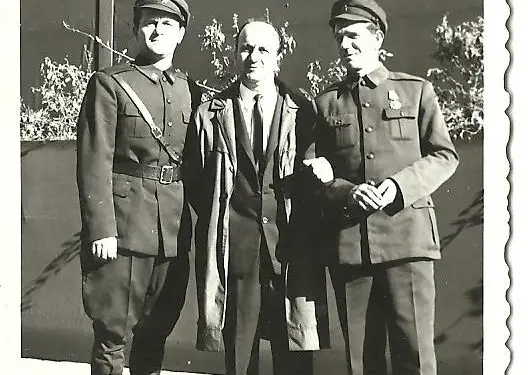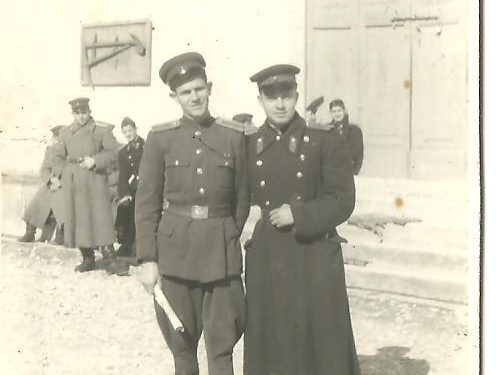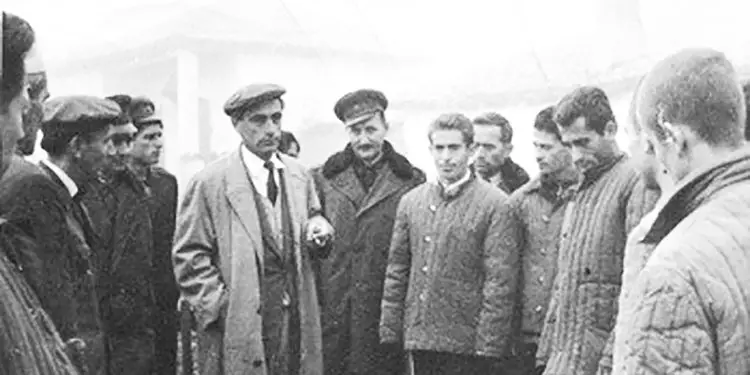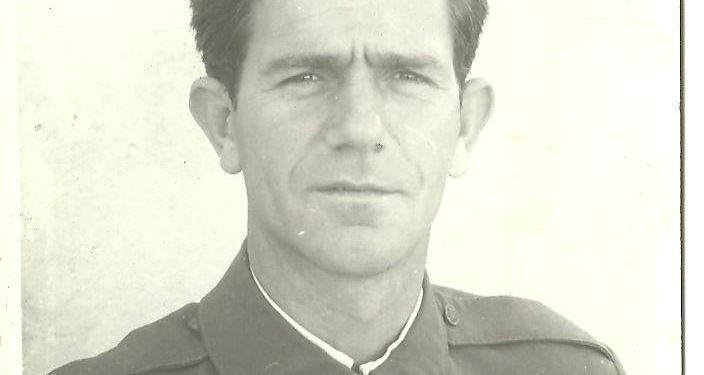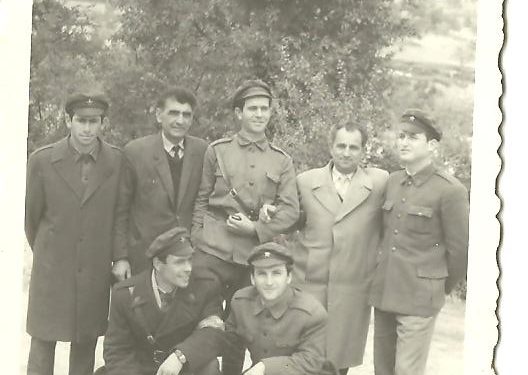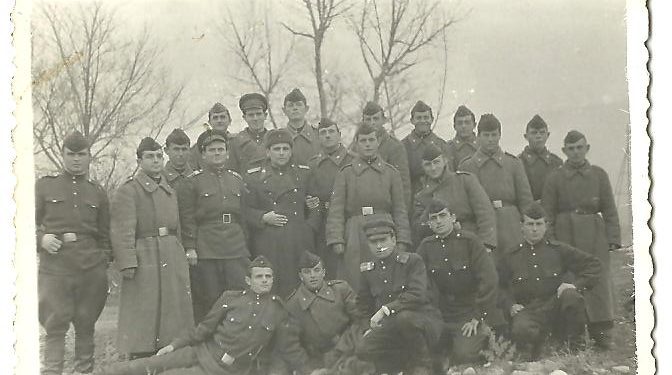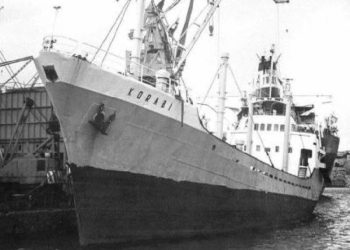Memorie.al publishes the interview of Mr. Sali Lila, former senior military of the Republic Guard on duty in the Leadership Bloc and then, former Commander-in-Chief of the Special Department of the MIA 324, leading the latter to in 1988. He recounts his personal experiences with some of the most prominent exponents of the Albanian communist state in the 36 years of his career as a senior military officer in some of the most important departments of the Ministry of Internal Affairs, with his colleagues as : Idriz Vladi, Idriz Shehu, Kristofor Mërtiro, Haki Keta, Lime Muçelli, Muharrem Sako, Hamit Revolli, Petro Nana etc….
Mr. Lila, what is the origin of your family?
I, Sali Lila, was born on July 7, 1933 in the Petrica neighborhood, which is also the first area of Petrela in Tirana, whence the origin of my family. It consisted of five members, from my father Selmani, my mother Sofia who by profession were farmers and ranchers on our properties in Petrela. Then she followed with three brothers, me Saliu, Ramazani, Qamili, and younger sister Aisha.
Where were you first educated?
My primary education would start at the 4-year school in Petrela during the war years 1940-1944, which would be an extremely difficult period for us as the destruction and damage would not spare even our village. After the end of the Anti-Fascist National Liberation War, I would immediately start working, serving as a courier for the Albanian Post in Tirana. Work which would not last long because, after 1945, I, like many others, would volunteer to build the Durrës-Peqin railway, one of the first important works of post-war Albania. Upon completion of the works on this railway, I would be transferred to work as a sub-worker for 6 months in the Ministry of World Affairs as it was known at the time. But even the stay in this post would not last long because, after the completion of the Durrës-Peqin railway, another equally important transport work would begin to be built in the years 1947-1948 by the work of hundreds of thousands of volunteers, that of the road Tirana-Durrës where one of them would be me. I worked there under the leadership of Fadil Mira, who we also had as the main person in charge of the works. I also remember very well the Yugoslav engineers, who stayed there constantly directing the very difficult process of works on this main road. Shortly after the severance of political and economic relations with Yugoslavia in 1948, I would return to my hometown of Petrela to work this time at the Krraba coal mine. During this time, I would be appointed secretary of the communist youth organization of Albania for the area of Petrela and Mullet, while a year later in 1950 I would complete a 6-month course for outpatient trade in Tirana. After completing this course, I was given the opportunity to work as an economist at the food collection point in Mullet at Sali Narazani’s house.
When would your military career begin?
But in 1952, my long 36-year military career would begin, starting first with my visit as a soldier to the border training center in Sauk, one of the first elite Albanian military units in the Tirana district. After completing my military service in this ward, I would be sent to serve as an effective in the ward of the People’s Republic Guard and especially I would personally have the opportunity to perform military service near Enver Hoxha’s villa in the Blloku area. March 5, 1953, which is also known as the day of Joseph Stalin’s death, would find me in the Bloc, thus becoming the main witness of the moment during which Enver Hoxha together with other members of the Politburo and the Soviet ambassador Levickin would leave the main Boulevard of Tirana in the direction of the center to kneel in front of the Stalin monument during the homage ceremony for his death.
After 1953, would you still serve on the block?
No, after 1953 I was transferred to the garrison of the Post of Tales in the area of Lezha, which at that time covered the point of the lagoon of Kune-Vain where would be the hunting reserve of the communist leadership. In this ward I would attain the rank of sergeant and then that of second captain. Here I served for about two and a half years and then in March 1956 I was discharged from the army and went to the 6-month State Security course at the MUP School in Sauk where I was assigned to a salary. The commander of this school was Muço Saliu, one of the main exponents of the Ministry of Internal Affairs, who would later reach the position of General Director of Security in the ‘60s-’70s. After completing my studies here, I returned to duty in the Republic Guard where I would serve as the caretaker of one of its main companies. For this reason, I would again witness one of the most important events in terms of the historiography of the Albanian Labor Party, that of the Tirana Conference in April 1956.
How do you remember this event?
Since I and a colleague Hysen Selimi had already taken on the task of guarding some of the buildings of the most important government institutions of the time such as the Central Committee and the Prime Minister, in addition I would be in the group of guards and units other guards of the Ministry of Interior during the proceedings at the Tirana Party Conference where almost half of its delegates influenced by the XX Congress in the Soviet Union, would rise to attack the communist leadership in general and Enver Hoxha in particular . In the hottest moment of the Conference, in April 1956, we noticed the column of government escort coming from Durrës Street towards the State Variety building (where the Conference was taking place, behind the National Historical Museum), from the car of second in line is Enver Hoxha with a tense look who quickly enters the hall where the meeting was taking place to face all the rebellious delegates. During this time, we received an order from the Minister of Interior Kadri Hazbiu to go on alert No. 1 for any surprise that might occur. In September of the same year I transferred to the United School “Enver Hoxha” to study in the military field for the infantry profile.
What were some of the special subjects you taught at this school?
Some of the subjects we taught in this school were, Radio Liaison, special tactics of neutralizing the enemy, extreme physical training, language subjects, etc. The period of my studies in this school would end in the summer of 1957, where I would be promoted to lieutenant together with one of the well-known figures of the Albanian Secret Service, Qazim Kapizysin and Veli Llakaj, the future Chief of Staff of the Albanian Army. After being released from this school, I returned to the High School of the Ministry of Internal Affairs in Sauk where this time I would study for the border profile where after the relatively high results I would achieve I would be promoted to the position of guardian. of course, of this profile. In this school in the late ’50s and early’ 60s, about 60 percent of the students would complete this profile, that of the border, while the remaining 40 percent would continue for police and security profiles. Also, some of the special curricula we taught in this school were, border detection practices, techniques of acting in terms of foreign detection, foreign secret services, political economy, forensics, border patrolling and surveillance, etc.
Can you remember some of your colleagues at the MIA School?
I can mention here some of my colleagues with whom I had the opportunity to study together with them in this school such as Hamit Revolli, Idriz Vladi, Idriz Shehu, Kristofor Mërtiro, Haki Keta, Lime Muçelli, Muharrem Sako, and Petro Nana. After finishing my studies at the Sauk school, I returned to the Guard for the third time, this time with Commander-in-Chief Çelo Arrza. Due to my satisfactory results both in the United School “Enver Hoxha” and in the High School of the Ministry of Interior, I together with some senior officials of various directorates of the State Security, on the recommendation of Kadri Hazbiu we would be sent to complete some specialized profile courses at the Soviet KGB Academy of Secret Service in Moscow, otherwise known in popular parlance as the “Dzerzhinsky School”. Unfortunately, this did not happen because in the years 1960-1961, as it is known after the Congress of 81 Communist Parties in Moscow, the Albanian state finally severed political-diplomatic and economic relations with the Soviet Union due to deep disagreements. ideological between Tirana and official Moscow. I want to emphasize that during the period of Albania-Soviet Union relations, I had the opportunity to meet some of the Soviet advisers who came to our country to train the employees of the Ministry of Internal Affairs and especially what I can remember from that time is the acquaintance I had with the former Soviet ambassador to Albania Vasili Ivanov and his family, who every time they went out and entered their residence in Bllok greeted us with a nod not only me but all the officers of the Guard who were on duty there nearby.
Remember some of the events that took place at that time in the bloc after the severance of relations with the Soviet Union?
After the severance of political-diplomatic and economic relations between Albania and the Soviet Union, a “strange” incident would impress all the guards of the Guard forces in the Bloc area. Sometime in 1965, a car of the diplomatic corps of one of the embassies of the socialist states of the eastern bloc would come quickly from the main street of Tirana Boulevard where the Prime Minister’s headquarters is located with the headquarters of the Central Committee, and would collide with the beam of the post-block in the main entrance alley of government residences. Immediately I and some soldiers who were performing the occasional service there stopped them and communicated the order to stop the circulation of all vehicles on the roads of the block for security reasons. After communicating this order, the driver was acquitted saying that he did not know that at that point of continuation of the road there could be a stopping post-block and immediately left with great speed in the direction of the University Corps. Even today I cannot explain exactly whether this episode was an “incident” or just a “coincidence”. Urgently after this event a final order was given to double the number of guards and officers in some of the main neuralgic points of the Government Bloc.
The year 1968 would mark the final exit of Albania from the Warsaw Pact. How was this event experienced in that period in the ranks of the Guard?
One of the events that would make us feel particularly alarmed as never before and in absolute readiness would undoubtedly be the final withdrawal of Albania from the Warsaw Pact political-military organization after the Soviet Union’s invasion of Czechoslovakia in 1968. De Facto Albania had left this treaty after the cessation of political, economic, and military relations with the Soviet Union in 1961, while 1968 would mark the de jure exit. At this time all the armament and logistical technique of the troops of the Guard units and of the entire Ministry of Internal Affairs would begin to be significantly modernized as the Albanian state would pass to a new phase of its military-strategic preparation for prevented a possible Soviet military attack on the shores of the Eastern Mediterranean. For this reason, together with the former Commander of the Guard Zija Kambon, Petrit Çobani, and Xhemal Morina, we would be part of the so-called Emergency Headquarters, of which Petrit Dume (who represented the Ministry of Defense) would be an integral part.) and Rexhep Kolli (who represented the Ministry of Internal Affairs). Also, in this emergency headquarters in case of war with the Soviets would be part of well-known names of the Politburo such as Mehmet Shehu and Abdyl Këllezi. This headquarters would continue to operate for about two years, until the autumn of 1970 when official Tirana no longer saw the need for its existence because the Soviet Red Army would never launch an attack on the shores of the Eastern Mediterranean. and the Balkans, and especially on Albanian territory. In November 1969, I would personally command the development of the military parade of the troops of the Guard and the MIA on the main Boulevard of Tirana, and after a few months I would be transferred to the post of Commander of the School of Instruction of the 410th Department of the Guard. of the Republic with its commander Ali Gjonçaj.
What would be your role in the development of this department?
Ali and I would significantly contribute to the improvement of the organizational structure and combat materials of this unit, even going so far as to build all its facilities from the large tunnels at the foot of the hills of Mullet, to the tents. and modern silos for the time. In this special unit, I would serve for about 10 years until 1980, when by order of the Minister of Interior Feçor Shehu, I would be appointed Commander-in-Chief of the special unit of the MIA and State Security, otherwise called and as the 324th Battalion. During my time as Deputy Commander of Unit 410 of the Guard and also Commander of the School of Instruction of the same unit, we would constantly develop a very intensive program regarding the nature of military training that is not only this ward but all other wards of the Republic Guard would be obliged to practice it. This special training would be borrowed from the example of the Communist China Guard training program. And this would happen because during the beginning and mid-70s, in the ranks of the Albanian Labor Party, there would be purges of the so-called Hostile Groups in the various sectors of culture, army, and economy of the Albanian state. . In the early 70’s and more precisely in 1973, in a brochure classified for internal use, Ramiz Alia was severely criticized by the employees of the MIA bodies because he had “tolerated” in some way the aspects of social and cultural liberalism which would culminate with the 11th Radio-Television Festival. But soon after, this pamphlet disappeared from circulation as it would be other senior and important exponents of the Politburo who would be swept away by that shockwave, which would last until the early 1980s.
Memorie.al




